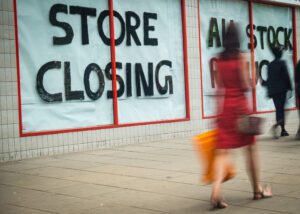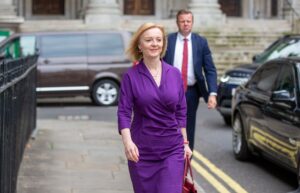Online returns rose to 1 in 3 items last year, say retailers

<?xml encoding=”utf-8″ ??>
Online retailers had 35 per cent of their goods returned last year, up from 25 per cent the previous year, with December replacing January for the first time as the busiest month, according to industry research.
The rise was driven by normal commercial returns, where clothing and shoes did not fit, or where goods were not what consumers expected.
Retailers also, however, tempted consumers to buy things they later realised they did not want by using aggressive discounting and bulk order offers as they sought to shift extra stock held in response to disrupted supply chains following the outbreak of the pandemic.
The cost of living crisis only increased returns at the margins when shoppers decided that they could not afford to keep an item, said Jelle Schoenmaker, managing director of ReBound Returns, a returns specialist that analysed the data.
He added that he expected online retailers to try to avoid creating peak periods of demand during this year and instead run a series of promotions to improve the efficiency of their supply chains. “We are seeing less discounting and more people charging for returns,” he added.
The peak month for returns has been January for the past ten years, ReBound said, but the postal strikes and bumper impulse buys in the Black Friday sales appeared to have brought forward that volume lasst year. Data from parcelLab, another returns management business, found that between Christmas and New Year’s Day more than 50,000 parcels were returned in the UK.
Schoenmaker said that the rate of returns in the UK was on par with that seen in the US but lower than in countries such as Germany where consumer expectations about their ability to return goods were more embedded.
He added that retailers typically had returns rates for electronics of about 4 per cent but footwear ranged from 15 to 20 per cent of purchases. Return rates for apparel were even wider, from 20 to 40 per cent, he said, influenced by factors such as whether the website gave accurate sizing information and free returns. Asos offers free returns; its fast-fashion rival Boohoo does not.
Reiss Edgerton, co-founder and chief executive of AYBL Group, which sells the AYBL activewear brand and the fashion label Because of Alice, said there had been a spike in returns last summer but it had since returned to more normal levels. He said he believed that the increase was because their target consumer — 18 to 24-year-olds — suddenly had less disposable income because they faced paying more for petrol. “We have a lot of young people working for us and the only thing they were talking about last summer was the cost of fuel,” he said.
The company offers free returns for its gym wear and the rate jumped from 10 per cent to 20 per cent last summer, before coming back down; returns for Because of Alice increased by a small amount from the typical 25 per cent rate.
Edgerton, 30, said that last year more customers also went ahead with returns after requesting a returns label. Normally a percentage of customers did not do so.
The findings about returned shopping follow official data that showed that retail sales fell in December, with the volume of goods people bought down by 1 per cent from the previous month and almost 6 per cent lower on the year before. In total, retail sales dropped by 3 per cent between 2021 and 2022, the biggest decline since the Office for National Statistics began collecting the data in 1997.
The IMRG Online Retail Index found that online retail sales were down 10.5 per cent last year. Online clothes sales fell 6.1 per cent in December compared with a year earlier. The CBI’s regular survey of goods distributors found that orders placed with suppliers were falling more severly in January than in December but that the pace of decline was expected to slow in Febuary.
A regular official survey of 10,000 businesses into trading conditions, which was released yesterday, found that in December almost half the wholesalers and retailers that responded said their turnover had fallen since November. This compares with three in ten of all the businesses saying that they had seen a decline.
Edgerton said he expected AYBL to grow its 2022 sales of £23.5 million by 30 per cent in the year to March this year, but is forecasting a slowdown later.
“I am forecasting a lot slower growth,” he said. “My focus this year is just to get control of all our costs. You get to live another day with that approach.”




